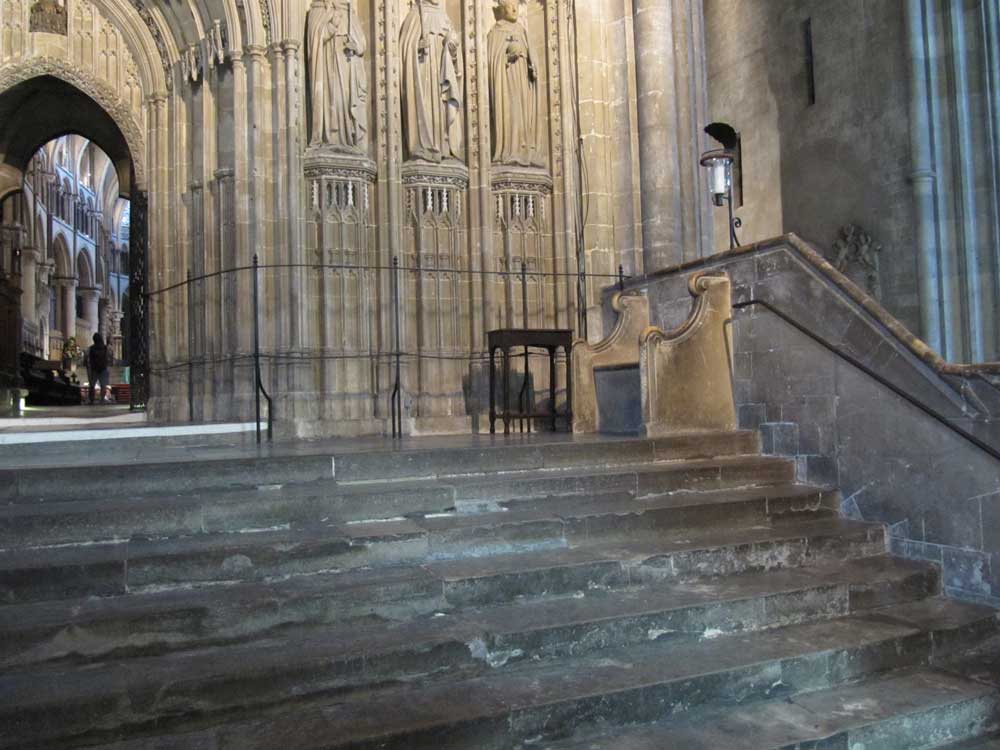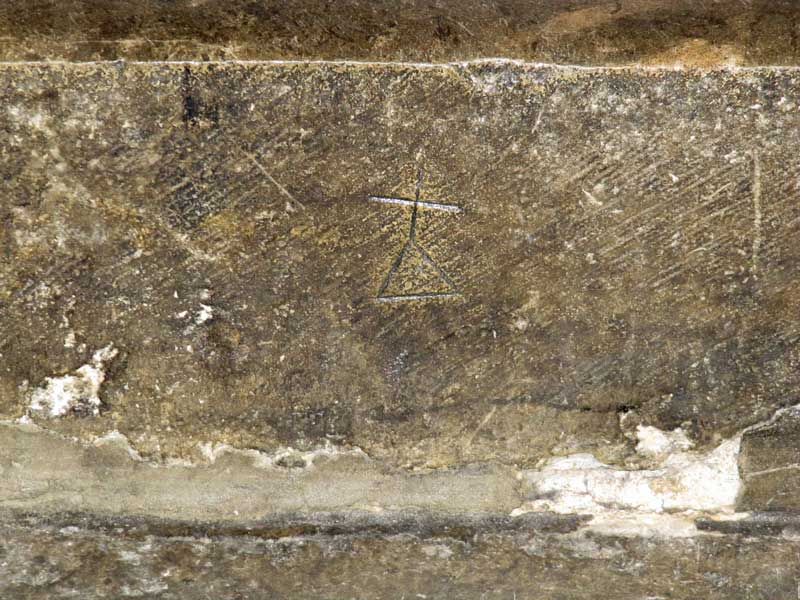The lower set of steps beneath the crossing are of Portland Stone. During the archaeological investigations in the nave in 1993 the riser to the bottom step was found to bear the inscription 1821, the date of installation of these stones.
A walkway separates the two sets of steps and contains a number of large orange coloured paving slabs. These are probably cut slabs of Caen Stone, utilised for flooring at the same time as supplies of Caen Stone were brought over from France for building works to the cathedral fabric. See: Caen Stone. The presence of small quantities of iron upon the stone surface and the heavy footfall on these paviours account for their appearance differing from that of the Caen Stone within the building fabric.
The upper set of steps are made almost exclusively from Purbeck Marble, with varying concentrations of Viviparus and Unio shells. Medieval masons’ marks can be seen on the risers of some of these stones.


Geoff Downer 2019
